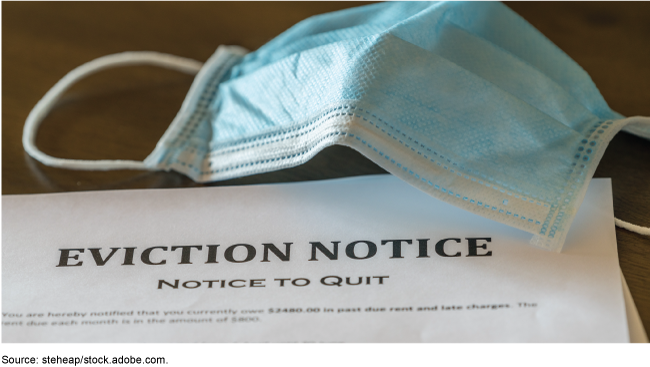Emergency Rental Assistance: Treasury Should Improve Data Completeness and Public Reporting
Fast Facts
Treasury's $47 billion Emergency Rental Assistance program helps low-income households affected by the pandemic pay rent and utilities.
As in our prior work, Treasury doesn't have complete data on payments or households. For example, for our new review, Treasury told us that 10% of grantees—with $787 million in funds—didn't report data on payments to households as of June 30, 2023.
Also, the risk of potential misuse—like paying ineligible households—remains.
Treasury publishes quarterly reports on the program but doesn't include these data limitations, making it hard to draw sound conclusions about the program. Our recommendation addresses this.

Highlights
What GAO Found
The Department of the Treasury administers the Emergency Rental Assistance (ERA) program, which provides about $47 billion to tribal, state, territorial, and certain local governments and the District of Columbia (grantees). Congress appropriated ERA funding twice, and Treasury considers these appropriations as separate programs (ERA1 and ERA2). Grantees that submitted data to Treasury as of June 30, 2023, reported expending about 87 percent of total ERA funds.
Grantees' Total Emergency Rental Assistance (ERA1 and ERA2) Expenditures Publicly Reported, by Program

Note: For more details, see fig. 2 in GAO-24-107084.
Consistent with its prior work on ERA, GAO found Treasury had not collected complete ERA2 data or assessed the risk of improper payments. Treasury was not collecting complete data on the program's expenditures, demographics, and payments to households, as of June 30, 2023. For example, 3 percent of ERA2 grantees, whose funds totaled $581 million, did not submit required data for the second quarter of 2023. Also, Treasury said 10 percent of grantees whose funds totaled $787 million did not report data on payments made to individual households as of June 30, 2023. According to Treasury, all but five grantees reported household payment data for the fourth quarter of 2023. To help improve its data collection, Treasury has shifted from quarterly to cumulative reporting (which allows grantees to correct data reported in prior quarters), but significant data limitations remain. Treasury also has not assessed the program's risk of improper payments to households, which GAO identified as a significant risk. As GAO reported in 2022, improving ERA data collection and assessing improper payment risks would better position Treasury to oversee the ERA program and address program risks.
ERA2 publicly available quarterly reports contain some notes on general limitations to the reported data, but do not clearly disclose more specific limitations. Specifically, the reports do not disclose that the data may underreport ERA2 funds and payments to households because not all grantees reported complete information. The reports also do not disclose which or how many local jurisdictions have declined ERA2 funds and transferred those funds to their state or another locality. In addition, the reports do not explain that the demographic information provided on households receiving assistance represents only those grantees that provided such information, not all grantees. These specific omissions may lead a user of the reports to draw inaccurate conclusions about the ERA2 program. Clear disclosure on the limitations of the ERA2 data would facilitate interpretation of the data and give Congress and the public a better understanding of what is known about the program and its outcomes.
Why GAO Did This Study
The ERA program helps low-income households affected by the COVID-19 pandemic pay rent, utilities, and other housing-related costs. ERA1 funds have expired, but grantees are still expending ERA2 funds, which do not expire until September 2025.
The CARES Act includes a provision for GAO to monitor federal efforts to respond to the COVID-19 pandemic. This report continues GAO's reporting on ERA and examines (1) the status of Treasury's efforts to ensure ERA has complete data and to address potential improper payments, and (2) Treasury's disclosure of the limitations of ERA2 data.
GAO analyzed ERA2 quarterly data on expenditures and household demographics and payments as of June 30, 2023, the most recent available at the time of analysis. GAO also compared Treasury's most recent publicly available reports (second quarter of 2023) against agency guidance and interviewed Treasury officials.
Recommendations
GAO recommends Treasury revise its public reports on ERA2 to clearly disclose data limitations. GAO also reiterates its 2022 recommendations (GAO-23-105410) that Treasury improve ERA data collection and complete a detailed assessment of improper payment risks. Treasury agreed with GAO's recommendation and provided a status update on the 2022 recommendations.
Recommendations for Executive Action
| Agency Affected | Recommendation | Status |
|---|---|---|
| Department of the Treasury | The Secretary of the Treasury should ensure that the Chief of the Office of Capital Access revise ERA2 public reports to include language disclosing details on potential underreporting of ERA2 expenditures, demographic information, and payments to households, and on local jurisdictions' transfer of funds. (Recommendation 1) |
Treasury has added language disclosing data limitations in their reports on ERA2 data. In April 2025, Treasury added new disclosures to its quarterly ERA2 report to include information on potential underreporting of ERA2 expenditures, demographic information, payments to households, and on local jurisdictions' transfer of funds. By adding these new data disclosures to the ERA2 public reports, Treasury has increased transparency and facilitated interpretation of ERA2 data to ensure Congress and the public have a better understanding of the program and its status.
|
